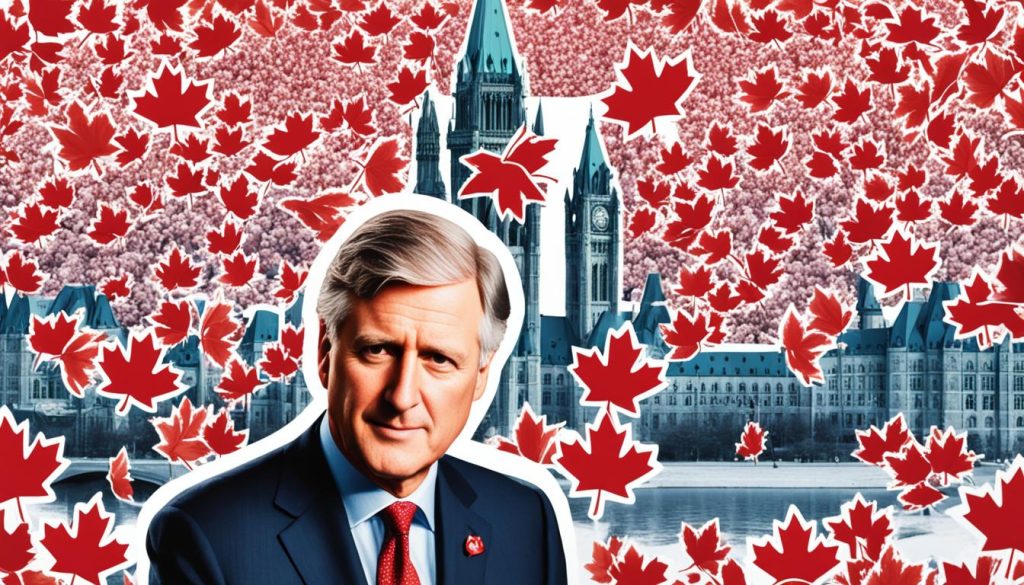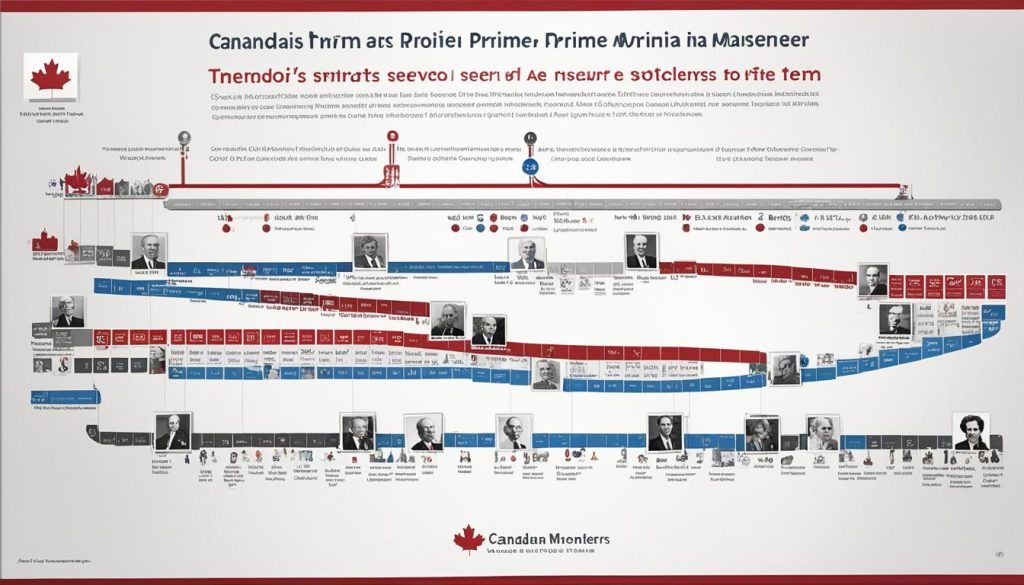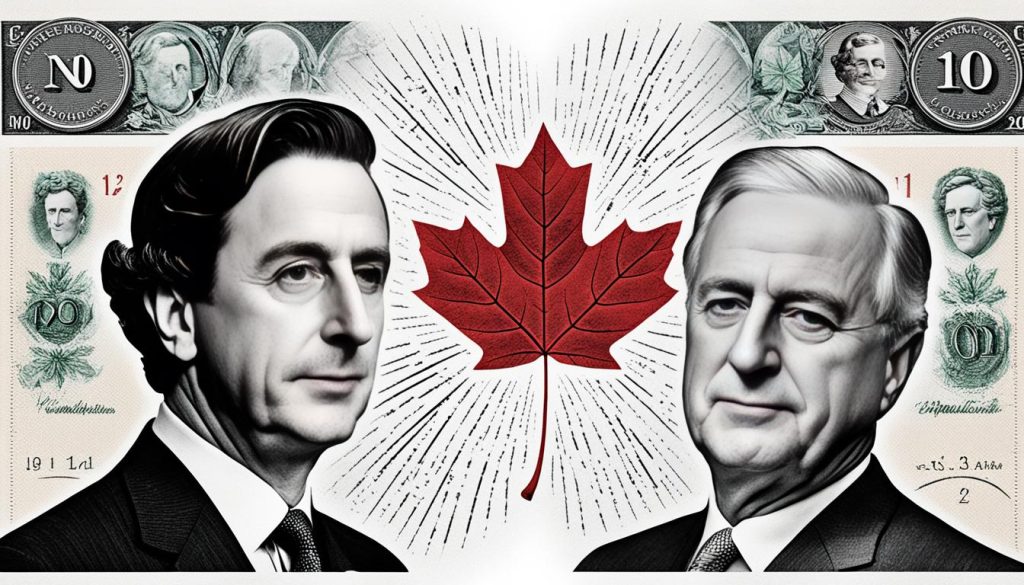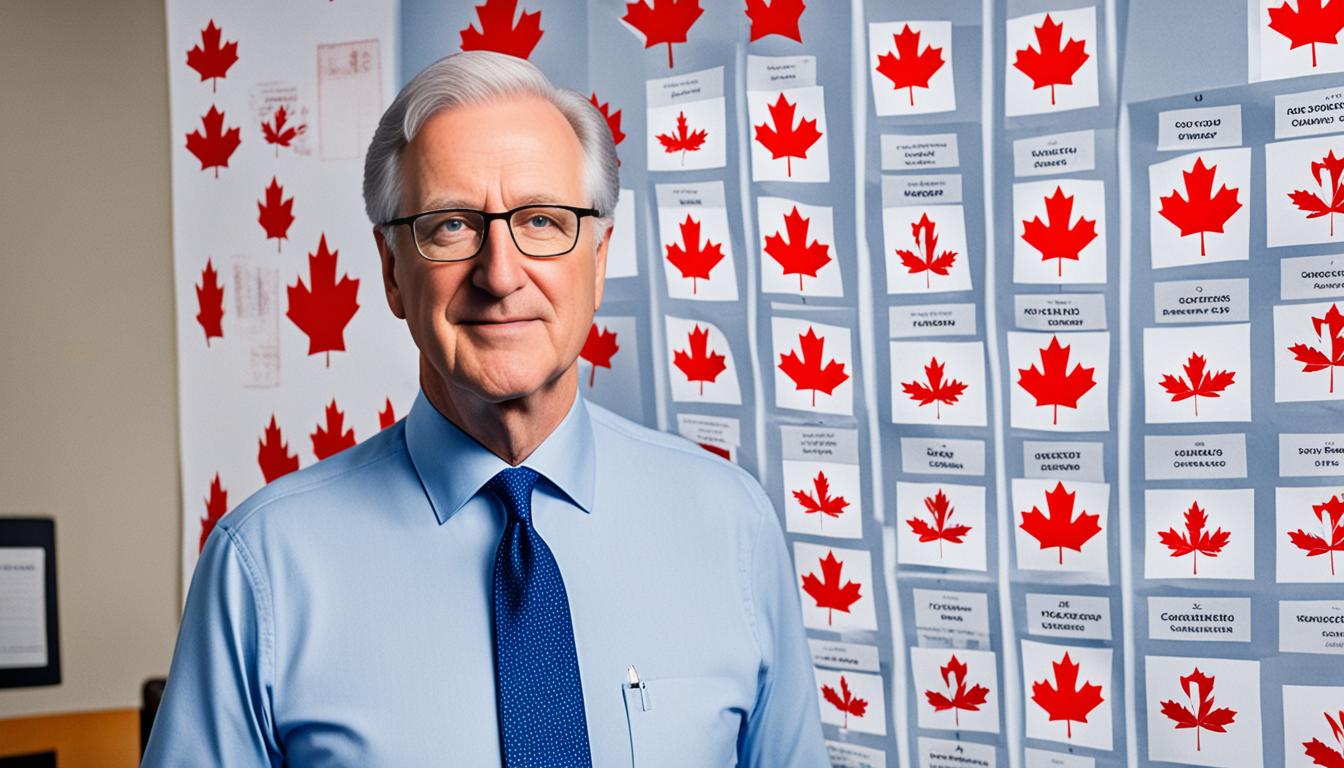Did you know that Canadian prime ministers can theoretically serve an unlimited number of terms? Unlike the United States, where the president is limited to two four-year terms, Canada’s parliamentary system allows for prime ministers to remain in office as long as they maintain the confidence of the House of Commons.
This unique aspect of Canada’s political landscape has led to some prime ministers serving for decades, while others have held the position for just a few months. The longest-serving prime minister, William Lyon Mackenzie King, was in power for a total of 21 years and 154 days over three non-consecutive terms. In contrast, the shortest-serving prime minister was Sir Charles Tupper, who was in office for just 68 days.
So, how exactly does the Canadian prime ministerial system work, and what factors influence the length of a prime minister’s tenure? Let’s delve into the details and explore the fascinating world of Canadian politics.
Canada’s Prime Ministerial System
The prime minister of Canada is the head of government of Canada. Since Canadian Confederation in 1867, there have been 23 prime ministers who have formed 29 Canadian ministries. The first prime minister, Sir John A. Macdonald, took office on July 1, 1867. The position does not have term limits. Instead, prime ministers can stay in office as long as their government has the confidence of a majority in the House of Commons of Canada under the system of responsible government.
Constitutional Provisions
The Canadian parliamentary system and the role of the prime minister are established in the Constitution of Canada. The prime minister’s tenure is not directly tied to the parliamentary term duration, which is a maximum of five years from the most recent general election.
Appointment and Tenure
The prime minister is appointed by the governor general of Canada, usually after winning a general election. A prime minister can also succeed another without an election, typically when they are successive leaders of the same party. The prime minister remains in office until they resign, die, or are dismissed by the governor general, a rare occurrence in Canadian political terms.

No Fixed Term Limits for Prime Ministers
In Canada, there are no fixed term limits for the office of the prime minister. Canadian prime ministers can serve as many terms as they are re-elected, without any constitutional restrictions on the number of terms they can serve. This unique aspect of the Canadian parliamentary system allows for a high degree of flexibility and democratic accountability, as the prime minister must maintain the confidence of the House of Commons to remain in power.
The length of a prime minister’s term in Canada is not tied to a fixed duration, but rather to the political dynamics within the House of Commons. As long as the prime minister’s government retains the support of a majority of elected members, they can continue to lead the country, regardless of how many previous terms they have served.
This contrasts with the fixed-term approach seen in some other political systems, where the head of government is limited to a specific number of terms or a maximum number of years in office. In Canada, the pm term length is determined by the will of the electorate, expressed through successive general elections.

The flexibility of the Canadian system has allowed for some prime ministers to serve multiple, non-consecutive terms, while others have held the office for a relatively short period. This dynamic reflects the unique nature of the canadian prime minister term limits and the maximum prime ministerial terms canada can accommodate.
Longest and Shortest Serving Prime Ministers
Canada has had a diverse range of prime ministers, with some serving significantly longer terms than others. The longest-serving prime minister in Canadian history was William Lyon Mackenzie King, who held the office for a remarkable 21 years and 154 days over three non-consecutive terms. The second longest-serving prime minister was Sir John A. Macdonald, who served for 18 years and 359 days, also over two non-consecutive terms.
William Lyon Mackenzie King: Longest Serving
William Lyon Mackenzie King was Canada’s longest-serving prime minister, holding the office from 1921 to 1926, 1926 to 1930, and 1935 to 1948. His total time in power spanned over two decades, making him one of the most influential figures in Canadian political history.
Sir John A. Macdonald: Second Longest Serving
Sir John A. Macdonald, the first prime minister of Canada, served for 18 years and 359 days over two non-consecutive terms, from 1867 to 1873 and 1878 to 1891. His long tenure and pivotal role in the Confederation of Canada solidified his legacy as one of the country’s most important political leaders.
Shortest Terms: Tupper, Turner, Campbell
In contrast, some Canadian prime ministers have had remarkably short terms in office. The shortest serving prime ministers include Sir Charles Tupper (68 days), John Turner (79 days), and Kim Campbell (132 days). These brief tenures were often the result of changes in government or party leadership.

Non-Consecutive Terms
Several Canadian prime ministers have served non-consecutive terms in office, demonstrating the flexibility of the country’s parliamentary system. This includes notable leaders like William Lyon Mackenzie King and Sir John A. Macdonald, who each held the office of prime minister over multiple non-consecutive tenures.
King’s Three Non-Consecutive Terms
William Lyon Mackenzie King, one of Canada’s longest-serving prime ministers, held the office for a total of three non-consecutive terms. He first took power from 1921 to 1926, then again from 1926 to 1930, and finally from 1935 to 1948. This ability to regain the premiership after electoral defeats highlights the lack of fixed term limits for the Canadian prime minister.
Macdonald’s Two Non-Consecutive Terms
Similarly, Sir John A. Macdonald, Canada’s first prime minister, served two non-consecutive terms in office. He was first prime minister from 1867 to 1873, then returned to the position from 1878 to 1891. Macdonald’s long and storied political career, including his ability to regain the prime ministership, is a testament to the durability of the Canadian parliamentary system.
The examples of King and Macdonald demonstrate how Canadian prime ministers can serve multiple terms, even if they are not consecutive. This flexibility in the system allows for political continuity and experienced leadership, while also preserving the need for democratic accountability through regular elections. As the current prime minister, Justin Trudeau has also served multiple terms, though the exact number may vary depending on one’s interpretation of the parliamentary conventions.

Transition of Power
When a prime minister’s party is defeated in a general election, the prime minister typically resigns from office. The transition of power in Canada is a negotiated process between the incoming and outgoing prime ministers, as the new party that forms the government appoints a new prime minister to lead the country. This transition typically takes place a few weeks after the election, as the new prime minister assumes office.
Resignation After Election Defeat
If the governing party loses the general election, the prime minister is expected to resign from office, making way for the new party to form the government. This resignation is a crucial step in the peaceful transfer of power, ensuring a smooth transition and maintaining the stability of the Canadian political system.
Appointment of New Prime Minister
The new party that forms the government will then appoint a new prime minister, who may or may not be the leader of that party. This appointment is typically made by the governor general of Canada, who acts on the advice of the incoming party. The length of Justin Trudeau’s time in power and the legacy of Pierre Trudeau’s long tenure as prime minister demonstrate the variety of experiences within the Canadian parliamentary system.
How Many Terms Can a Prime Minister Serve in Canada?
In Canada, there are no constitutional limits on the number of terms a prime minister can serve. The canadian prime minister term limits are governed solely by the confidence of the House of Commons. This means that a prime minister can theoretically serve an unlimited number of terms, as long as their government maintains the support of the majority in the House.
No Constitutional Limits
Unlike other political systems with fixed maximum prime ministerial terms canada, the Canadian parliamentary model does not impose any legal restrictions on the pm term length canada. A prime minister can remain in power for as long as they are able to secure the confidence of the elected representatives in the House of Commons.
Governed by Confidence of House
The key factor determining the longevity of a Canadian prime minister’s tenure is their ability to command the confidence of the House of Commons. As long as the governing party retains a majority, or can form a minority government with the support of other parties, the prime minister can continue in office indefinitely, subject to periodic elections.
Minority Governments and Short Terms
In the Canadian parliamentary system, minority governments generally last for a shorter duration compared to majority governments. The shortest minority government was Arthur Meighen’s second government, which lasted just under three months. Other prime ministers who served brief terms due to minority governments include Joe Clark and Paul Martin.
Meighen’s Brief Minority Governments
Arthur Meighen, who served as the 9th Prime Minister of Canada, had the distinction of leading two minority governments, both of which were short-lived. His first government lasted just 17 days in 1926, while his second stint as prime minister was even shorter, clocking in at under three months in 1926.
Clark and Martin’s Short Terms
Joe Clark and Paul Martin are two other Canadian prime ministers who held office for relatively brief periods due to minority governments. Clark’s Progressive Conservative government lasted just 9 months in 1979-1980, while Martin’s Liberal government was in power for a little over 2 years from 2003 to 2006.
These examples demonstrate how the dynamics of minority governments in Canada can result in prime ministers serving much shorter terms compared to those who lead majority governments. The political term in Canada is not fixed, but rather dependent on a prime minister’s ability to maintain the confidence of the House of Commons.
Historical Perspective
The Canadian political landscape has evolved significantly since the early days of Confederation. In the formative years, the transition of power between Canadian political terms was often marked by gaps between the terms of outgoing and incoming prime ministers. The longest such gap was a mere ten days between the death of Sir John A. Macdonald and the appointment of his successor, Sir John Abbott. This period highlighted the Canadian parliamentary system and its flexibility in responding to changing circumstances.
Early Prime Ministers
As the Canadian government structure solidified in the late 19th century, the transition of power became more streamlined. Prime ministers were increasingly able to maintain a continuous term in office, rather than facing extended gaps between administrations. This shift reflected the growing stability and institutional maturity of the Canadian political system.
Twentieth Century Transitions
The 20th century witnessed an even more seamless transition of power. In modern times, the new prime minister typically takes office the day after the previous prime minister leaves, ensuring a smooth and efficient transfer of executive authority. This evolution in the Canadian political terms and Canadian parliamentary system has contributed to the overall stability and continuity of Canadian governance.
Precedents and Conventions
The transition of power and resignation of prime ministers in Canada is governed by precedents and conventions, rather than strict constitutional rules. The canadian political terms, canadian parliamentary system, and canadian government structure all play a role in this process.
Resignation and Appointment Practices
When a prime minister resigns, the governor general typically appoints the new leader of the governing party as the new prime minister. This practice has become customary over time, reflecting the parliamentary system’s emphasis on maintaining the confidence of the House of Commons.
Confidence Convention
The confidence convention is a crucial factor in the prime minister’s tenure. A prime minister must maintain the confidence of the House of Commons to remain in power. This means the government must be able to command the support of a majority of members in the House of Commons, either through a majority government or a minority government with the support of other parties.
Comparison to Other Parliaments
Canada’s lack of term limits for the prime minister is not unique among parliamentary systems. Many other countries with parliamentary systems, such as the United Kingdom and Spain, also do not have fixed term limits for their prime ministers or premiers. The parliamentary mechanisms in these countries are typically designed to ensure democratic rotation in the office of the prime minister, rather than relying on explicit term limits.
Term Limits in Parliamentary Systems
While Canada does not impose any restrictions on the number of terms a prime minister can serve, some parliamentary democracies have adopted term limit policies. For instance, in Israel, the prime minister is limited to two consecutive terms. However, these exceptions are relatively rare, and the majority of parliamentary systems, including the United Kingdom and Spain, allow their prime ministers to serve an unlimited number of terms as long as they maintain the confidence of the legislature.
The flexibility of the parliamentary system, which allows for the democratic rotation of prime ministers through regular elections, is often seen as a key strength. This approach contrasts with the fixed-term limits common in presidential systems, such as the United States, where the president is limited to two four-year terms.
Conclusion
In conclusion, the Canadian prime minister does not have any fixed term limits, and can theoretically serve an unlimited number of terms as long as they maintain the confidence of the House of Commons. This system of responsible government allows for flexibility and democratic accountability, but also raises questions about the concentration of power and the need for periodic political renewal. The experiences of Canada’s longest-serving and shortest-serving prime ministers, such as William Lyon Mackenzie King and Sir John A. Macdonald, demonstrate the range of possibilities within the country’s parliamentary system.
The ability of a Canadian prime minister to serve without term limits reflects the unique nature of the country’s parliamentary system, which prioritizes the maintenance of the confidence of the elected legislature over strict term restrictions. While this system has its advantages, it also requires vigilance to ensure that the prime minister’s power does not become overly concentrated or entrenched. The ongoing debates around how many terms can a prime minister serve in canada, canadian prime minister term limits, and maximum prime ministerial terms canada underscores the continued importance of this issue in the Canadian political landscape.
Ultimately, the flexibility of the Canadian prime ministerial system is both a strength and a challenge, requiring a careful balance between democratic accountability and the efficient functioning of government. As the country’s political landscape continues to evolve, the role and tenure of the prime minister will likely remain a topic of ongoing discussion and debate among Canadians.
FAQ
1. Are there term limits for prime ministers in Canada?
No, there are no term limits for the Canadian prime minister. They can theoretically serve as many terms as they are re-elected.
2. How many terms has Justin Trudeau served as prime minister?
Justin Trudeau has served two terms as prime minister so far, after being elected in 2015 and 2019.
3. How long is one term for a Canadian prime minister?
The prime minister’s term begins upon appointment by the governor general and lasts until they resign, die or are dismissed, usually after winning a general election. The term is not tied directly to the 5-year term of the House of Commons.
4. Who is the longest-serving prime minister in Canada?
William Lyon Mackenzie King was Canada’s longest-serving prime minister, holding office for a total of 21 years and 154 days over three non-consecutive terms.
5. Is there a limit to how long you can be prime minister in Canada?
No, there is no constitutional limit on the number of terms a prime minister can serve in Canada. They can remain in office as long as their government maintains the confidence of the House of Commons.
6. How long was Pierre Trudeau in power?
Pierre Trudeau served as Prime Minister of Canada from 1968 to 1984, with a brief interruption from 1979 to 1980, for a total of 15 years and 164 days in office.
7. How long is a political term in Canada?
The term of the House of Commons is a maximum of 5 years from the most recent general election. However, the prime minister’s term is not directly tied to the parliamentary term and can last longer if the government maintains confidence.




